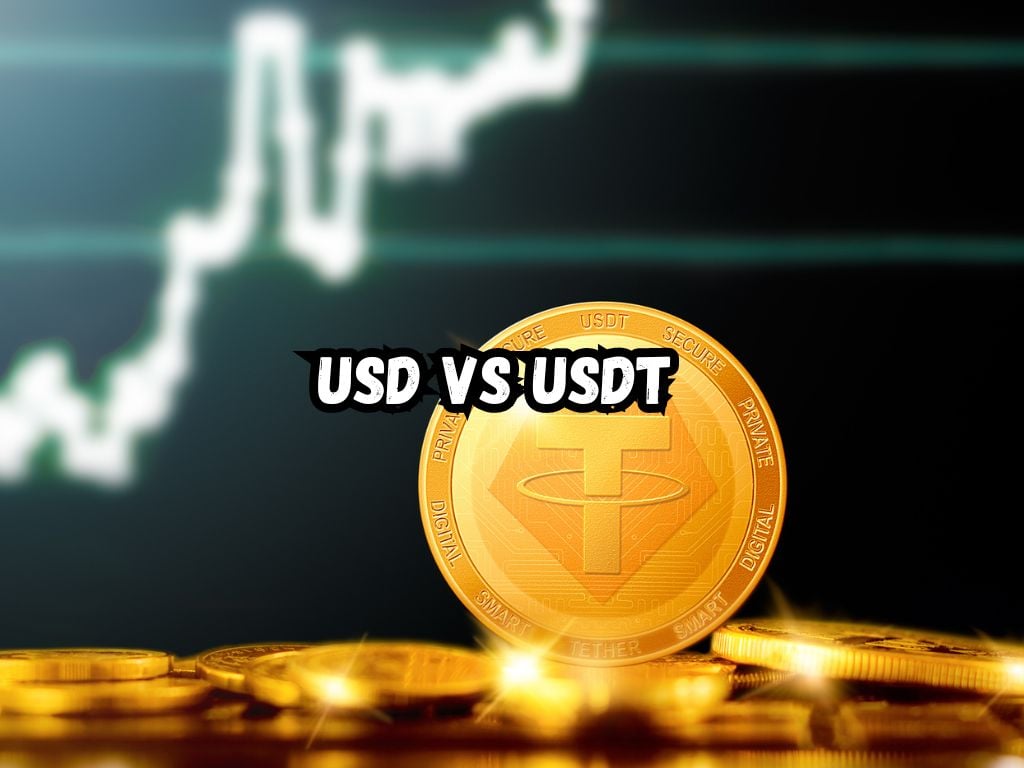In the evolving landscape of finance, understanding the nuances between traditional currency, like the United States Dollar (USD), and digital currencies, such as Tether (USDT), has become paramount.
This article delves into USD vs USDT the distinctions, advantages, and considerations of each, providing a clear comparison to enhance financial literacy and inform investment decisions.
What is USD (United States Dollar)?
The USD holds the status as the world’s primary reserve currency, embedded deeply in global trade and finance. Originating from the Coinage Act of 1792, the USD has evolved to become a symbol of economic stability worldwide.
As a fiat currency, it is backed by the full faith and credit of the U.S. government, rather than a physical commodity like gold or silver. This backing instills a level of trust that bolsters its use globally. However, the USD is not free from disadvantages.
Fluctuations in value due to inflation, as well as international political and economic turmoil, can affect its purchasing power and stability.

What is USDT (Tether)?
Tether, or USDT, is a form of cryptocurrency known as a stablecoin, aiming to maintain a constant value pegged to a traditional currency, in this case, the USD.
Since its inception, USDT has sought to offer the digital equivalent of the dollar, combining the stability of a traditional currency with the flexibility of a cryptocurrency.
It enables users to transact and invest without the high volatility associated with typical cryptocurrencies.
However, concerns have been raised regarding transparency and regulatory compliance, which are crucial to its widespread acceptance and use.
USD vs USDT: A Comparative Analysis
Value Stability: The USD’s value can be influenced by factors such as interest rates, inflation, and the economic policies of the U.S. government.
In contrast, USDT is designed to be stable, its value tethered to the USD, aiming to mitigate the inherent volatility of the crypto market.
Risk Profile: Holding USD is generally considered to be lower risk, given its backing by the U.S. government. USDT, while stable, carries risks related to the transparency of its reserves and regulatory scrutiny.
Legal and Regulatory Implications: The USD operates within a well-established legal framework.
USDT, meanwhile, navigates a less defined regulatory landscape, which can pose challenges for users and investors regarding legal protections.
Real-world Application: USD is universally accepted for a wide range of transactions around the world. USDT’s acceptance, primarily within the digital marketplace, is growing but still lacks the universality of USD.
Practical Uses and Significance
In daily transactions, the choice between USD and USDT might come down to convenience and purpose.
USD remains unbeatable for widespread acceptance, but USDT offers a digital alternative that simplifies cross-border transactions and can be a boon for online traders and investors.
It allows for rapid transfers without the fees and time associated with traditional banking systems.
However, conversion ease and liquidity remain concerns for USDT users, as converting back to fiat currency, like USD, may not always be straightforward.
Pro Tips and Best Practices
- Security: When dealing with USDT, ensure you use secure, reputable platforms and wallets to minimize the risk of loss or theft.
- Invest Wisely: Consider your risk tolerance and investment goals when deciding to hold USD or USDT. Diversification can help manage risk.
- Stay Informed: The legal and regulatory landscapes for cryptocurrencies are evolving. Keep abreast of changes that could affect your holdings.

Economic Impact and Influence
The dominance of the USD as a global reserve currency significantly impacts international economics, influencing global trade, investment flows, and monetary policies beyond American borders.
Shifts in USD metrics such as inflation and interest rates can precipitate worldwide economic ripples, affecting exchange rates, foreign investment appetites, and overall economic stability in other countries.
Conversely, the influence of USDT, while growing, remains more circumscribed, primarily affecting participants within the cryptocurrency markets.
Fluctuations in cryptocurrency valuation can impact USDT, but these effects are generally contained within the digital asset space and have yet to exert substantial influence on broader global economics akin to the USD’s far-reaching impact.
Frequently Asked Questions
Is USDT as safe as USD?
While USDT aims for stability, it doesn’t carry the same governmental backing as USD, presenting a different risk profile.
Can I use USDT for all my transactions?
USDT’s use is growing, especially online and in cross-border transactions. However, it has not achieved the universal acceptance of USD.
How does USDT maintain its value?
USDT is pegged to the USD, with reserves held to back its value. This design intends to maintain its price at or very near $1 USD.
What are the main benefits of USDT over USD?
USDT offers the speed and flexibility of cryptocurrency transactions, including reduced fees and time for cross-border payments, while aiming to maintain a stable value.
Conclusion
Comparing USD and USDT reveals distinct features, advantages, and considerations. While USD offers unparalleled stability and universal acceptance, USDT presents an innovative approach to digital transactions, melding the flexibility of cryptocurrency with the relative stability of a fiat currency.
Understanding these distinctions allows individuals to navigate financial decisions more confidently, selecting the currency that best meets their needs based on convenience, risk tolerance, and investment strategy.


 Tags:
Tags:










